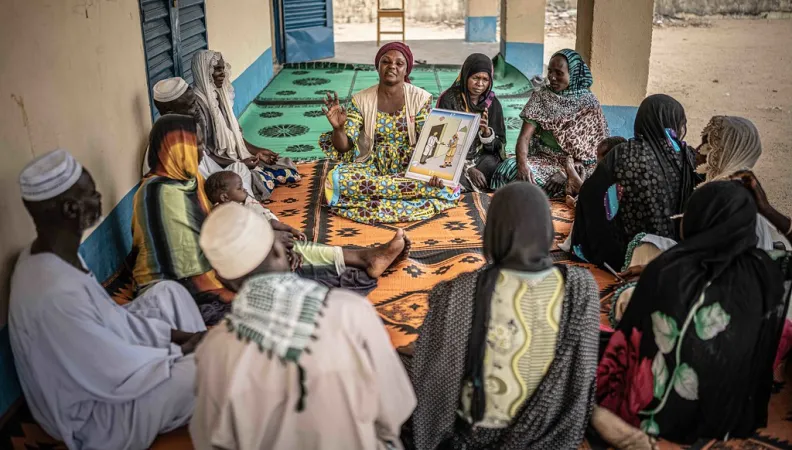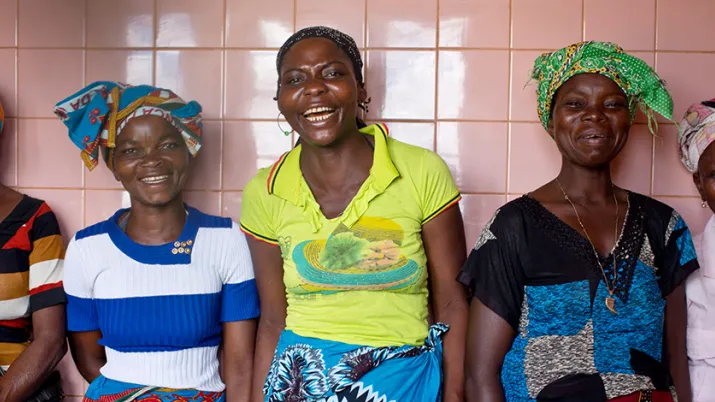Share the page
Global Health and Gender: what Levers to reduce Inequalities?

-
When
-
-
Schedule
-
2.30 pm to 4pm (Paris time)
Watch the replay of our latest #RDVExpertise event from 4 December 2025 and follow the fascinating debates on the challenges of integrating gender into global health policies!
The end of 2025 is marked by numerous international highlights related to global health and the fight for gender equality, such as the 30th anniversary of the Beijing Conference (4–15 September 1995), the fourth and most important world conference on women, which consolidated 50 years of legal progress aimed at ensuring equality between women and men. The 16 Days of Activism Against Gender-Based Violence was held, as every year, from 25 November (International Day for the Elimination of Violence Against Women) to 10 December (International Human Rights Day), while the 8th replenishment of the Global Fund to Fight AIDS, tuberculosis and malaria enabled countries to come together to establish funding for the global fight against the three diseases, but also to join in the momentum of World AIDS Day on 1 December.
Although undeniable progress has been made in global health over the past few decades, inequalities between men and women persist. Recent pandemics, as well as structural issues within health systems, highlight that health issues are never neutral but are always rooted in social, economic and cultural relationships that impact women, men and gender minorities differently.
These factors have very real consequences for the health of both women and men:
6% of boys only have received the full HPV vaccination schedule
Conversely, 47.6% of girls are vaccinated. Globally, HPV is responsible for approximately 44% of cervical cancers (Milano, G. et al. (2023). Human Papillomavirus Epidemiology and Prevention. Vaccines, 11(6), 1060. https://doi.org/10.3390/vaccines11061060)
56% of women die from cardiovascular disease
Although men are more affected by these diseases, the mortality rate is higher among women than among men (46%). This is because delays in diagnosis and treatment remain common (High Council for Gender Equality (HCE), ‘Taking sex and gender into account for better healthcare: a public health issue’, report submitted on 15 December 2020).
These inequalities are exacerbated by income disparities between countries and their capacities to respond to major global public health challenges. In light of these observations, the systematic inclusion of a gender perspective in global health policies and programmes is now a necessity, not an option.
So how can gender mainstreaming be put into practice in a concrete way in the field? How can it be promoted in international forums for discussion so that decision-makers take it more seriously?
Watch the replay for fascinating discussions!
Access to healthcare: what are the gender-related barriers and how can they be removed?
The first round table consisted of three speakers:
- Elian Passier, Gender Advisor at Médecins du Monde - France;
- Charlotte Berquin, Localisation, Gender and Inclusion Specialist at the WHO Academy (remotely from Lyon);
- Gisele Umutoniwase, Programme Director at the Rwanda Men's Resource Centre (RWAMREC) (remotely from Kigali)
 © Anabel Gay / Expertise France
© Anabel Gay / Expertise France
Gender and quality of care: a differentiated experience?
The second round table featured a discussion between four speakers:
- Anne-Sophie Grenouilleau-Albertini, pharmaceutical advisor at the French National Authority for Health (HAS) and author of the report ‘Sex, Gender and Health’ (2020);
- Prof. Jacqueline Dunkley-Bent, Chief Midwife at the International Confederation of Midwives (ICM);
- Mélanie Samson, Senior Technical Manager, Women's Health at the World Surgery Foundation (remotely from Geneva);
- Kady Kourouma, Head of Sexual and Reproductive Health Services at Solthis (remotely from Abidjan).
 © Anabel Gay / Expertise France
© Anabel Gay / Expertise France
on the same topic
SUCCESS - Scale Up Cervical Cancer Elimination with Secondary prevention Strategy
The SUCCESS project focuses on the fight against cervical cancer and aims to strengthen secondary prevention, i.e. prevent the development of cancer in women with a human papillomavirus (HPV) infectio...
- When ?
-
2019 - 2026
Status
Ongoing
- Location
- Ivory Coast, Guatemala, Philippines
- Funders
- Unitaid
- Financing amount
- 22.6m €

